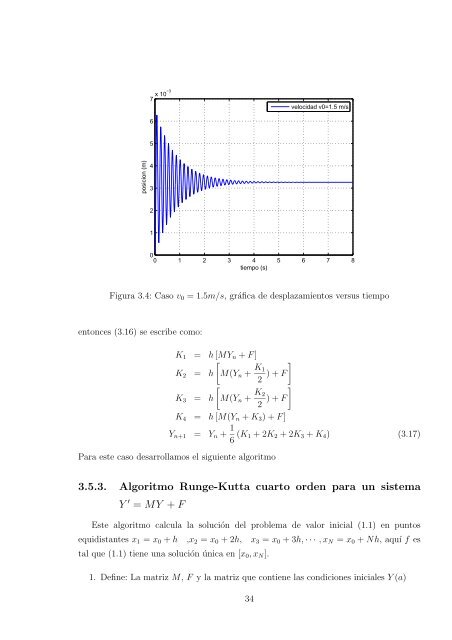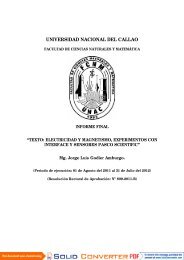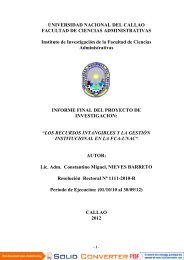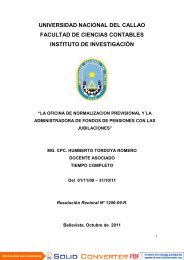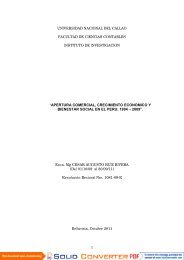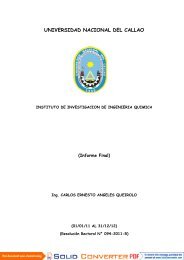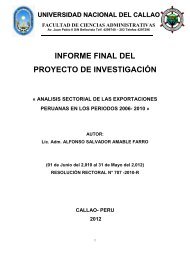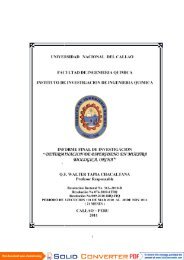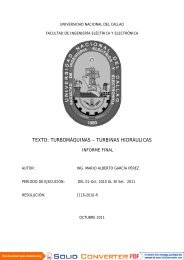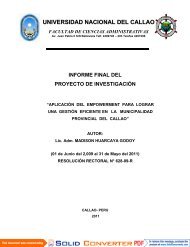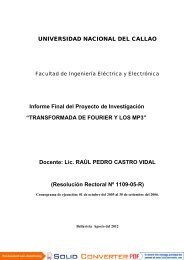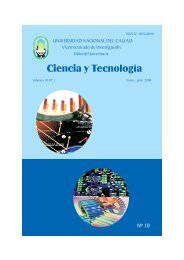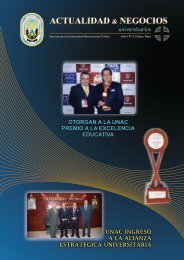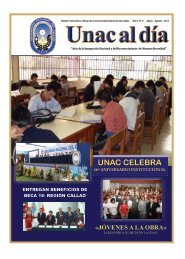texto: metodos numericos para ecuaciones diferenciales ordinarias
texto: metodos numericos para ecuaciones diferenciales ordinarias
texto: metodos numericos para ecuaciones diferenciales ordinarias
You also want an ePaper? Increase the reach of your titles
YUMPU automatically turns print PDFs into web optimized ePapers that Google loves.
posicion (m)<br />
x 10−3<br />
7<br />
6<br />
5<br />
4<br />
3<br />
2<br />
1<br />
velocidad v0=1.5 m/s<br />
0<br />
0 1 2 3 4<br />
tiempo (s)<br />
5 6 7 8<br />
Figura 3.4: Caso v0 = 1.5m/s, gráfica de desplazamientos versus tiempo<br />
entonces (3.16) se escribe como:<br />
K1 = h [MYn + F]<br />
<br />
K2 = h M(Yn + K1<br />
<br />
) + F<br />
2<br />
<br />
K3 = h M(Yn + K2<br />
<br />
) + F<br />
2<br />
K4 = h [M(Yn + K3) + F]<br />
Yn+1 = Yn + 1<br />
6 (K1 + 2K2 + 2K3 + K4) (3.17)<br />
Para este caso desarrollamos el siguiente algoritmo<br />
3.5.3. Algoritmo Runge-Kutta cuarto orden <strong>para</strong> un sistema<br />
Y ′ = MY + F<br />
Este algoritmo calcula la solución del problema de valor inicial (1.1) en puntos<br />
equidistantes x1 = x0 + h ,x2 = x0 + 2h, x3 = x0 + 3h, · · · ,xN = x0 + Nh, aquí f es<br />
tal que (1.1) tiene una solución única en [x0,xN].<br />
1. Define: La matriz M, F y la matriz que contiene las condiciones iniciales Y (a)<br />
34


